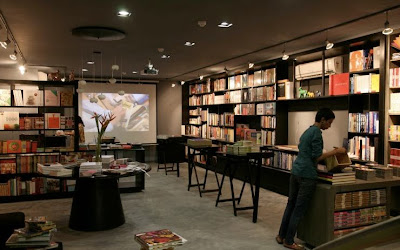Inside CMYK and it's a whole other world.
With books displayed on shelves and on tables, it's perfect for a lengthy browsing session. CMYK – named for the four colours used in printing (cyan, magenta, yellow and black) – is a modern, grey-toned, downlit and minimalist space. Unlike most cramped bookshops, this one is spacious and high-ceilinged, calm and quiet.
CMYK is an art and design focused shop, unveiled last September mainly as a vehicle to give the books of its parent publishing company, Roli Books, prominent positioning. (Roli Books books are about 30% of the stock; there's also Taschen, Phaidon and other major international houses).
Every time I go to CMYK I stay for around an hour, browsing through the collection of books like I Know How To Cook and Raghu Rai photography tomes. No one stops me, or asks me if I want them to put the book aside, or want it in another colour.
CMYK is ideally positioned in an up-and-coming area: the Mehar Chand Market, very close to Lodi Colony and right behind Delhi's cultural hub, the India Habitat Centre.
Here's a handy map:
Roli Books, which is a small family owned publishing house, has big plans for CMYK: there are plans afoot to take the concept to seven cities. First off will likely be Mumbai, where they are set to open a store-within-a-store at Bungalow 8. Next on the list are Goa, Bangalore, Gurgaon.
But for now, visitors to Delhi should most definitely add it to their must-visit list. I'm sure the sewage works will be done by then.






